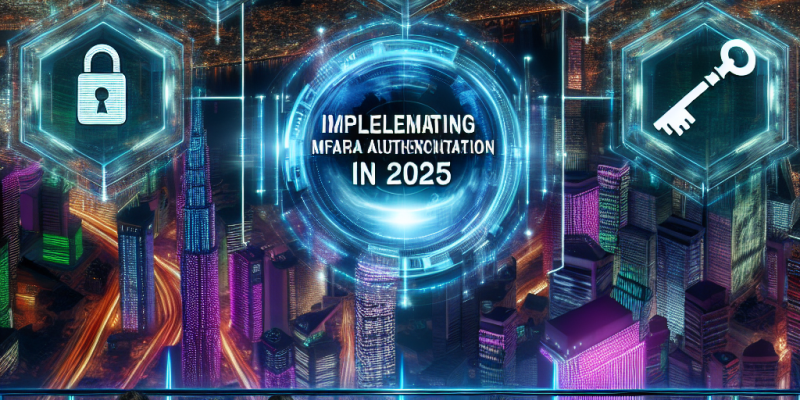Implementing MFA in 2025: Challenges and Opportunities for Businesses

As we move into 2025, the importance of cybersecurity continues to grow. One of the most effective ways to enhance security is through Multi-Factor Authentication (MFA). This method adds an extra layer of protection by requiring users to provide multiple forms of verification before accessing sensitive information. While MFA is a powerful tool, implementing it comes with challenges and opportunities for businesses.
What is MFA?
MFA requires users to present two or more verification factors to gain access to an account. These factors can include:
- Something you know: A password or PIN.
- Something you have: A smartphone or a security token.
- Something you are: Biometric data, like fingerprints or facial recognition.
Challenges of Implementing MFA
1. User Resistance
Many users find MFA inconvenient. They might be reluctant to change their habits, feeling that typing in a password and then receiving a code on their phone is too time-consuming. Businesses need to communicate the importance of MFA clearly and help users understand its benefits.
2. Cost and Resource Allocation
Implementing MFA can be costly. It may require new tools, software, or even hiring additional staff for tech support. Businesses also have to train employees on how to use MFA effectively. Organizations must plan their budgets carefully to accommodate these costs.
3. Technical Integration
Integrating MFA with existing systems can be complicated. Companies often use various software and platforms, making it difficult to ensure that MFA works with all of them. Compatibility issues can arise, leading to potential disruptions in service.
4. Risk of Lockouts
One common concern is the possibility of users getting locked out of their accounts. If a user loses their phone or can’t access their second factor for any reason, they may be unable to log in. Businesses must have backup procedures in place to assist users.
Opportunities of Implementing MFA
1. Enhanced Security
The most significant benefit of MFA is improved security. With MFA in place, the chances of unauthorized access decrease significantly. This is particularly important in a world where cyberattacks are becoming more common.
2. Building Customer Trust
When businesses implement MFA, they demonstrate that they take security seriously. This can enhance customer trust. Customers are more likely to choose a company that prioritizes their data security, leading to increased loyalty and sales.
3. Compliance with Regulations
As privacy laws continue to evolve, companies may be required to adopt stricter security measures. Implementing MFA can help businesses meet regulatory requirements, avoiding potential fines and legal issues.
4. Competitive Advantage
Businesses that prioritize security through MFA can differentiate themselves from competitors. A reputation for robust security can be a selling point, attracting new customers who value data protection.
Conclusion
In 2025, implementing Multi-Factor Authentication offers both challenges and opportunities for businesses. While user resistance, costs, and technical integration can pose difficulties, the benefits—enhanced security, customer trust, compliance, and competitive advantage—far outweigh the drawbacks.
Businesses that embrace MFA not only protect their sensitive information but also build a solid foundation for future growth. To successfully implement MFA, organizations should invest in education, resources, and support for their users. By doing so, they will be better prepared to face the cybersecurity challenges of today and tomorrow.














